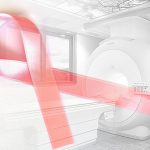- Like
- SHARE
- Digg
- Del
- Tumblr
- VKontakte
- Flattr
- Buffer
- Love This
- Save
- Odnoklassniki
- Meneame
- Blogger
- Amazon
- Yahoo Mail
- Gmail
- AOL
- Newsvine
- HackerNews
- Evernote
- MySpace
- Mail.ru
- Viadeo
- Line
- Comments
- Yummly
- SMS
- Viber
- Telegram
- JOIN
- Skype
- Facebook Messenger
- Kakao
- LiveJournal
- Yammer
- Edgar
- Fintel
- Mix
- Instapaper
- Copy Link
About one out of every nine men will be diagnosed with prostate cancer during his lifetime, making it the second most common cancer in American men, behind only skin cancer.1
However, due to advances in cancer screening awareness and early detection, most men will not die from prostate cancer.
In fact, many men who are diagnosed with an early-stage, low-grade cancer may need little to no immediate medical treatment. Instead, they can choose from two different methods of monitoring their prostate cancer: watchful waiting or active surveillance.
For men with prostate cancer, the goal of cancer management methods like watchful waiting and active surveillance is to avoid the side effects caused by cancer treatments like surgery or radiation therapy.
Both watchful waiting and active surveillance are ways of monitoring the cancer for changes, but the reasons for choosing one method over the other are different:
- Watchful waiting is better for men who can’t undergo curative treatment. It is meant to manage symptoms by controlling the cancer, but is not intended to cure it.
- Active surveillance is better for men who would benefit from curative treatment should the cancer become more aggressive.
Prostate cancer patients may wish to forgo immediate treatment, and instead use watchful waiting or active surveillance when:
- There are no symptoms present
- Gleason score indicates a slow-growing cancer
- PSA level is relatively low (less than 10ng/mL)
- Tumor size is small
- Cancer has not spread beyond the prostate
In this article, we’ll explain the differences between watchful waiting and active surveillance, and which patients might be better suited for each. We’ll also look at the advantages and disadvantages of both methods and discuss your next steps if you’d like to discuss your diagnosis with a physician.
About Watchful Waiting
Watchful waiting is used when there are no symptoms present. It involves closely monitoring a patient’s condition, but not treating the prostate cancer unless symptoms appear or change. During watchful waiting, men may undergo occasional prostate-specific antigen (PSA) tests or digital rectal exams (DRE), but this method mainly relies on watching for symptoms of prostate cancer.
Men with other chronic, potentially life-threatening illnesses are best suited for watchful waiting because the risk of possible side effects from other treatments, like surgery or radiation therapy, could outweigh the benefits. Older men may also benefit from watchful waiting because other treatments may not help them live any longer, and the cancer isn’t likely to impact their quality of life.
If symptoms appear or change during watchful waiting, a patient may choose to discuss other treatment options, such as hormone therapy. Symptoms to look for during watchful waiting include frequent urination (especially at night), difficulty stopping/starting urination, blood in the urine, painful or burning sensation during urination, dull pain in the lower pelvis, and widespread pain in the lower back, hips or thighs.
Typically, treatment during watchful waiting is not meant to cure the cancer, but rather control it to help manage the patient’s symptoms.
Advantages of Watchful Waiting
- Passive approach with fewer tests
- Avoids side effects of surgery or radiation therapy
- Cancer may never need to be treated
Disadvantages of Watchful Waiting
- Cancer could grow or spread between follow-ups, making treatment harder
- Patient must live with anxiety of having cancer, worry about it growing
- Family members may worry and not understand why you aren’t treating the cancer
About Active Surveillance
Active surveillance is a more aggressive form of monitoring prostate cancer than watchful waiting. It involves a regular testing schedule, including a PSA test every six months and a DRE at least once a year. Imaging tests and prostate biopsies are also usually performed every one to three years.
The goal of active surveillance is to avoid or delay the need for other treatments like surgery or radiation therapy. This helps the patient avoid possible side effects like erectile dysfunction and incontinence for as long as possible.
If test results show that the prostate cancer is getting worse, a patient may choose to stop active surveillance and start a treatment plan designed to cure the cancer. Since treatment may ultimately be necessary, patients who are best suited for active surveillance include:
- Men with slow-growing cancer that has not spread beyond prostate
- Men whose benefit from surgery or radiation outweighs the risk
Advantages of Active Surveillance
- Avoid sexual, urinary or bowel side effects for as long as possible
- Regular testing means cancer is more closely monitored
- Cancer may never need treatment
Disadvantages of Active Surveillance
- Aggressive approach, more rigorous testing schedule
- Regular biopsies are necessary
- Patient must live with anxiety of having cancer, worry about it growing
Next Steps for Prostate Cancer Patients Interested in Watchful Waiting or Active Surveillance
If you have been diagnosed with prostate cancer, it’s important to understand all of your treatment options, and the possible side effects of each. This includes the options of watchful waiting or active surveillance. Your physician will consider many factors when helping you choose a treatment plan including: PSA level, tumor size, Gleason score (grade), cancer stage, age, overall health, family history, race, ethnicity and personal preference.
The board-certified radiation oncologists at Provision CARES Proton Therapy are experts in prostate cancer treatment. When you schedule a consultation with one of our physicians, they will be able to discuss the specifics of your prostate cancer diagnosis, and help determine whether watchful waiting or active surveillance may be beneficial for you.
They can also discuss your next steps and treatment options, including proton therapy, which is an advanced form of radiation therapy that reduces treatment-related complications and side effects compared to traditional x-ray radiation.
As a first step in moving forward with your cancer care, we recommend calling the Provision location nearest you. Our Cancer Care Experts can speak with you about your diagnosis, answer any questions you may have and, if desired, schedule you for an in-person or telehealth consultation with one of our physicians.
References:
1. National Cancer Institute. Surveillance, Epidemiology, and End Results Program. https://seer.cancer.gov/statfacts/html/prost.html


